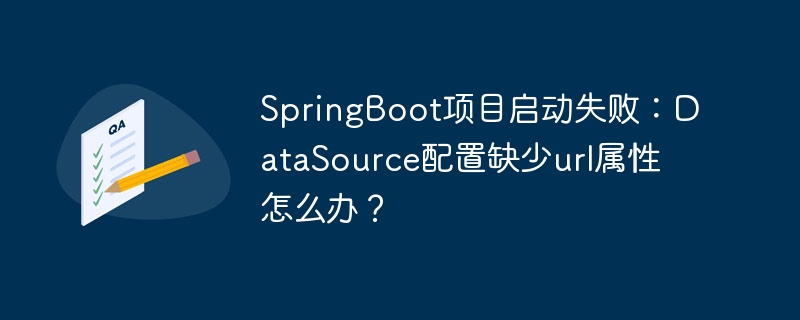php發送http請求的方法有四種:file_get_contents、fsockopen、cURL和guzzle http client。1. file_get_contents適用于簡單get請求,但功能有限;2. fsockopen提供底層控制,需手動處理請求細節;3. curl功能強大,支持多種協議和高級選項,適合復雜需求;4. guzzle提供簡潔api,具備良好可維護性和可測試性,適合現代開發。選擇時應考慮請求復雜度、性能、安全性及代碼維護性。例如,發送https請求需確保ssl/tls支持,并優先使用curl或guzzle;若需高并發,curl或基于其的guzzle更佳;對于可讀性強的代碼,推薦使用guzzle。此外,這幾種方法均支持獲取響應頭和設置超時時間,以提升程序健壯性。

PHP發送HTTP請求,核心在于利用PHP提供的函數或庫,模擬瀏覽器行為,向服務器發送請求并接收響應。常用的方法包括file_get_contents、fsockopen、cURL以及Guzzle HTTP Client。選擇哪種方式取決于你的具體需求,例如是否需要處理復雜的請求頭、是否需要支持HTTPS,以及是否需要更高的性能和靈活性。

file_get_contents通常最簡單,但功能也最有限。fsockopen提供了更底層的控制,但需要手動處理更多細節。cURL是一個功能強大的庫,支持各種協議和選項,是更專業的選擇。而Guzzle HTTP Client則是一個現代的PHP HTTP客戶端,提供了更簡潔的API和更好的可測試性。

如何選擇合適的HTTP請求方法?
選擇HTTP請求方法,需要考慮以下幾個因素:
立即學習“PHP免費學習筆記(深入)”;

-
復雜度需求:如果只是簡單的GET請求,file_get_contents可能就足夠了。但如果需要發送POST請求,或者需要自定義請求頭、處理Cookies等,cURL或Guzzle會更合適。
-
性能要求:在高并發場景下,cURL通常比file_get_contents性能更好,因為它使用了更底層的網絡協議。Guzzle底層也可以使用cURL,所以性能也相對較好。
-
安全性:如果需要發送HTTPS請求,確保服務器支持SSL/TLS,并且PHP配置正確。cURL和Guzzle都支持HTTPS,并且可以配置SSL證書驗證。
-
代碼可維護性:Guzzle提供了更簡潔、易于理解的API,可以提高代碼的可讀性和可維護性。
下面分別介紹這四種方法,并給出示例代碼。
file_get_contents發送HTTP請求
file_get_contents函數可以讀取一個文件或者URL的內容。當URL是一個HTTP地址時,它會發送一個HTTP請求并返回響應內容。
<?php $url = 'https://www.example.com'; $content = file_get_contents($url); if ($content !== false) { echo $content; } else { echo "Failed to retrieve content."; } ?>
這個方法很簡單,但是不支持自定義請求頭、POST請求等高級功能。如果需要發送POST請求,可以使用stream_context_create函數來創建上下文選項。
<?php $url = 'https://www.example.com/api'; $data = array('key1' => 'value1', 'key2' => 'value2'); $options = array( 'http' => array( 'method' => 'POST', 'header' => 'Content-type: application/x-www-form-urlencoded', 'content' => http_build_query($data) ) ); $context = stream_context_create($options); $result = file_get_contents($url, false, $context); if ($result !== false) { echo $result; } else { echo "Failed to retrieve content."; } ?>
fsockopen發送HTTP請求
fsockopen函數可以打開一個套接字連接,通過套接字可以手動發送HTTP請求并接收響應。
<?php $host = 'www.example.com'; $port = 80; $path = '/'; $fp = fsockopen($host, $port, $errno, $errstr, 30); if (!$fp) { echo "$errstr ($errno)<br />n"; } else { $out = "GET $path HTTP/1.1rn"; $out .= "Host: $hostrn"; $out .= "Connection: Closernrn"; fwrite($fp, $out); while (!feof($fp)) { echo fgets($fp, 128); } fclose($fp); } ?>
這個方法提供了更底層的控制,但是需要手動構建HTTP請求頭和處理響應。
cURL發送HTTP請求
cURL是一個功能強大的庫,支持各種協議和選項,是發送HTTP請求的常用方法。
<?php $url = 'https://www.example.com'; $ch = curl_init(); curl_setopt($ch, CURLOPT_URL, $url); curl_setopt($ch, CURLOPT_RETURNTRANSFER, 1); curl_setopt($ch, CURLOPT_SSL_VERIFYPEER, false); // 忽略SSL證書驗證 $output = curl_exec($ch); if (curl_errno($ch)) { echo 'Error:' . curl_error($ch); } curl_close($ch); echo $output; ?>
cURL支持各種選項,例如自定義請求頭、發送POST請求、設置超時時間等。
<?php $url = 'https://www.example.com/api'; $data = array('key1' => 'value1', 'key2' => 'value2'); $ch = curl_init(); curl_setopt($ch, CURLOPT_URL, $url); curl_setopt($ch, CURLOPT_RETURNTRANSFER, 1); curl_setopt($ch, CURLOPT_POST, 1); curl_setopt($ch, CURLOPT_POSTFIELDS, $data); curl_setopt($ch, CURLOPT_SSL_VERIFYPEER, false); // 忽略SSL證書驗證 $output = curl_exec($ch); if (curl_errno($ch)) { echo 'Error:' . curl_error($ch); } curl_close($ch); echo $output; ?>
Guzzle HTTP Client發送HTTP請求
Guzzle是一個現代的PHP HTTP客戶端,提供了更簡潔的API和更好的可測試性。需要先通過composer安裝Guzzle:
composer require guzzlehttp/guzzle
然后可以使用Guzzle發送HTTP請求:
<?php require 'vendor/autoload.php'; use GuzzleHttpClient; $client = new Client(); $response = $client->request('GET', 'https://www.example.com'); echo $response->getBody(); ?>
Guzzle也支持各種選項,例如自定義請求頭、發送POST請求、設置超時時間等。
<?php require 'vendor/autoload.php'; use GuzzleHttpClient; $client = new Client(); $response = $client->request('POST', 'https://www.example.com/api', [ 'form_params' => [ 'key1' => 'value1', 'key2' => 'value2' ] ]); echo $response->getBody(); ?>
如何處理HTTP響應頭?
在使用cURL或Guzzle發送HTTP請求時,可以很方便地獲取HTTP響應頭。
使用cURL:
<?php $url = 'https://www.example.com'; $ch = curl_init(); curl_setopt($ch, CURLOPT_URL, $url); curl_setopt($ch, CURLOPT_RETURNTRANSFER, 1); curl_setopt($ch, CURLOPT_HEADER, 1); // 返回header信息 curl_setopt($ch, CURLOPT_SSL_VERIFYPEER, false); $output = curl_exec($ch); $header_size = curl_getinfo($ch, CURLINFO_HEADER_SIZE); $header = substr($output, 0, $header_size); $body = substr($output, $header_size); curl_close($ch); echo "Header:n" . $header . "nn"; echo "Body:n" . $body; ?>
使用Guzzle:
<?php require 'vendor/autoload.php'; use GuzzleHttpClient; $client = new Client(); $response = $client->request('GET', 'https://www.example.com'); $headers = $response->getHeaders(); $body = $response->getBody(); echo "Headers:n"; foreach ($headers as $name => $values) { echo $name . ': ' . implode(', ', $values) . "n"; } echo "nBody:n" . $body; ?>
如何處理HTTP請求超時?
在發送HTTP請求時,設置合理的超時時間非常重要,可以避免程序長時間阻塞。
使用cURL:
<?php $url = 'https://www.example.com'; $ch = curl_init(); curl_setopt($ch, CURLOPT_URL, $url); curl_setopt($ch, CURLOPT_RETURNTRANSFER, 1); curl_setopt($ch, CURLOPT_TIMEOUT, 10); // 設置超時時間為10秒 curl_setopt($ch, CURLOPT_SSL_VERIFYPEER, false); $output = curl_exec($ch); if (curl_errno($ch)) { echo 'Error:' . curl_error($ch); } curl_close($ch); echo $output; ?>
使用Guzzle:
<?php require 'vendor/autoload.php'; use GuzzleHttpClient; $client = new Client(); try { $response = $client->request('GET', 'https://www.example.com', ['timeout' => 10]); // 設置超時時間為10秒 echo $response->getBody(); } catch (GuzzleHttpExceptionRequestException $e) { echo 'Error: ' . $e->getMessage(); } ?>



















